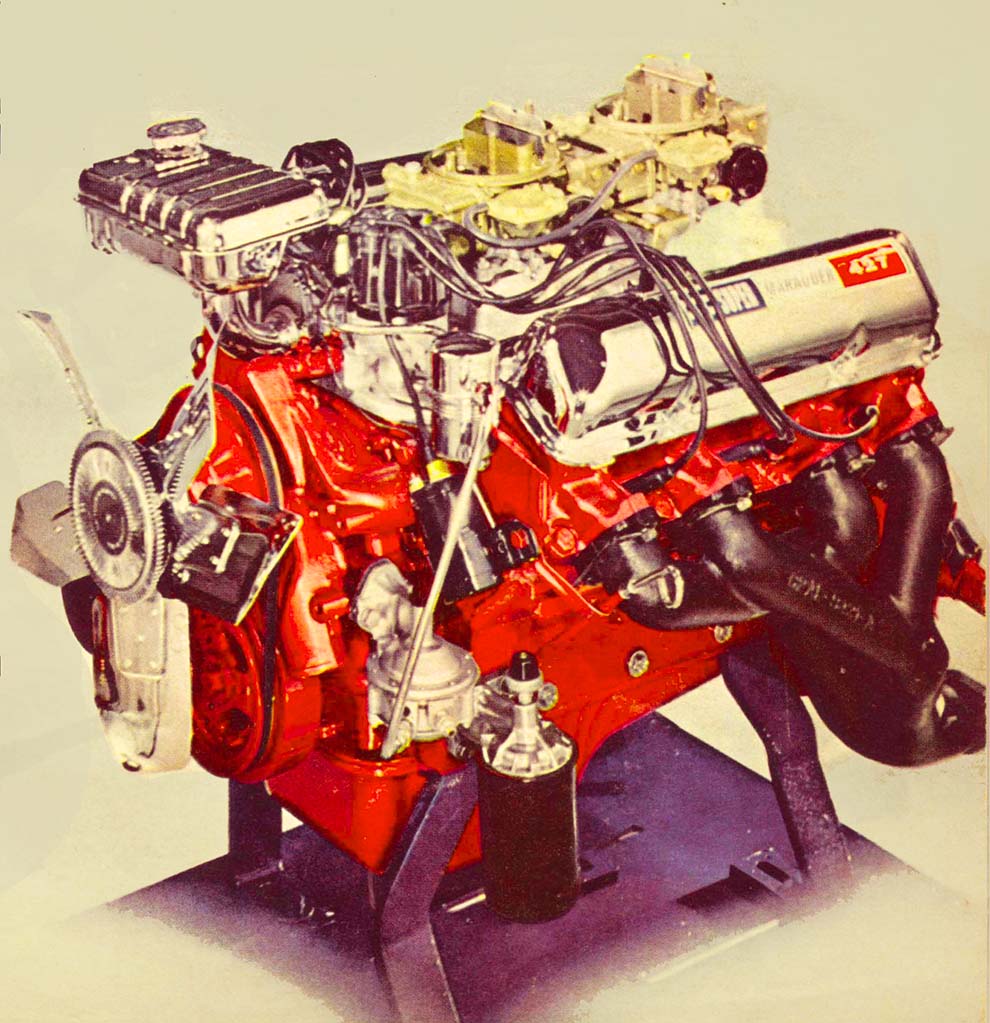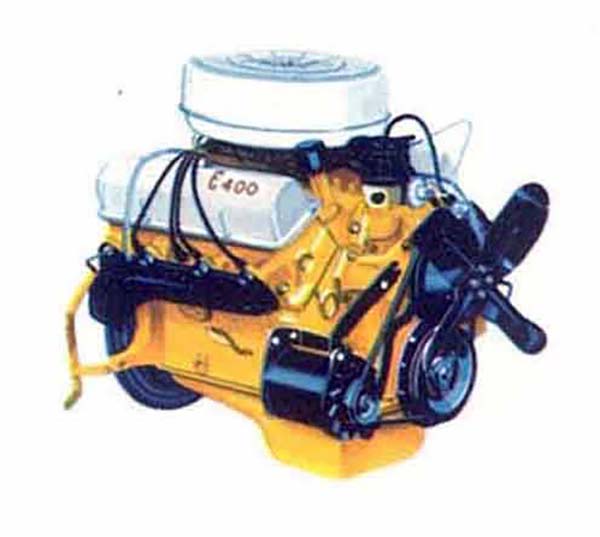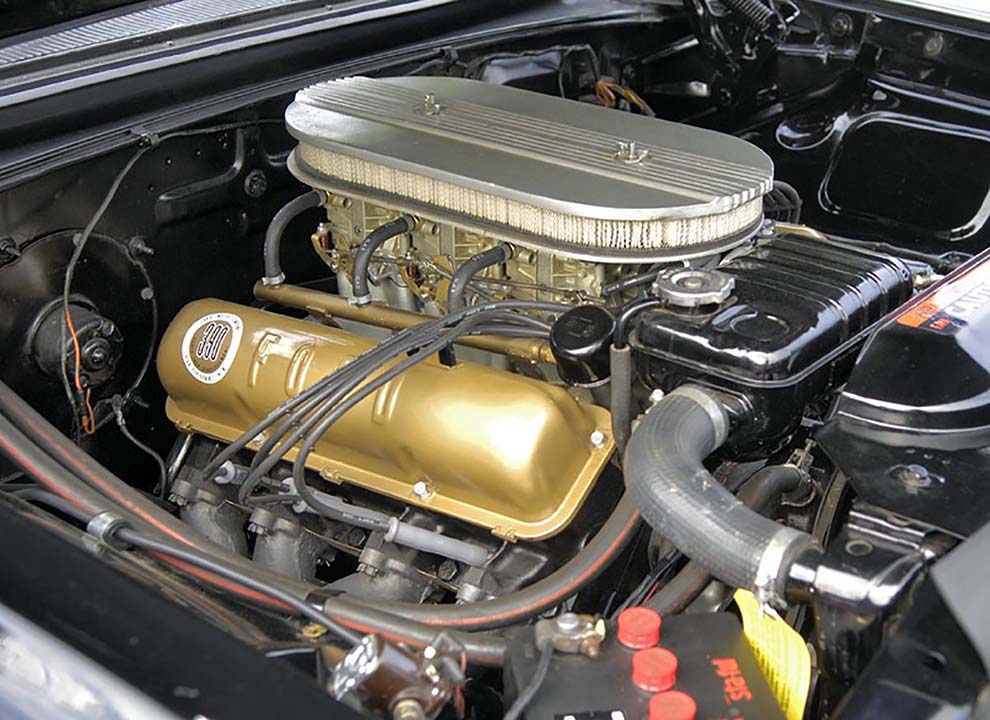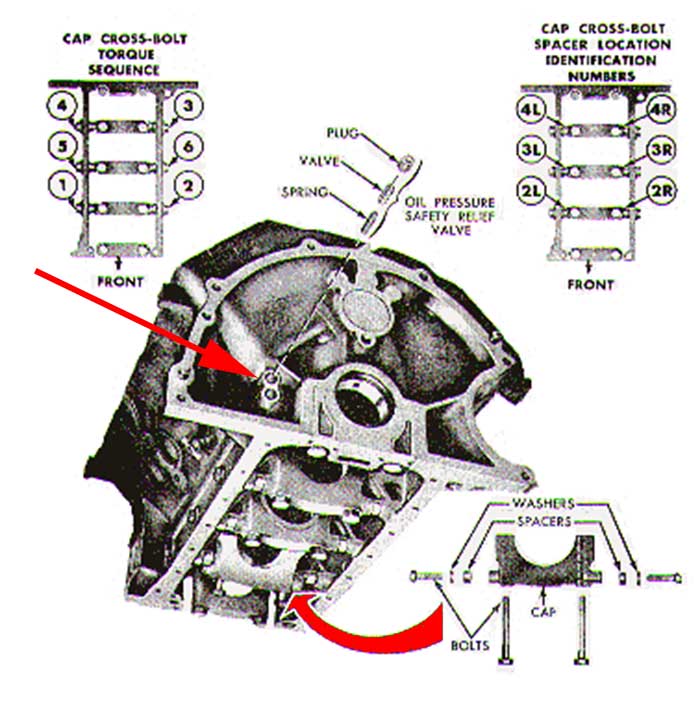by Society Staff – reprint with permission only
The Ford FE V8 engine was used so extensively that we decided to break the description into three segments: early passenger car applications, late passenger car applications, and truck applications.
Introduction
The Ford FE engine was the company’s answer to the rising weight of US cars in the late ’50s and the demand for more horsepower and torque from the buyers. “FE” stood for “Ford-Edsel,” which was where the engine was intended to be used at the time of introduction.
The FE filled the need for a relatively lightweight large CID engine set above the workhorse Ford small Y-block which had reached its maximum size potential at 312 CID. The FE series engine was very sturdy and versatile and was used in cars, trucks, buses, and boats, as well as for industrial pumps and other equipment.
The FE was available from 1958 through 1976. The same engine, with minor package changes, was designated the “FT” block and was used in medium and heavy Ford trucks from 1964 through 1978. The FT differed primarily by having a steel instead of a nodular iron crankshaft, a larger crank snout, different distributor shafts, different water pumps, and other minor differences added to increase strength and reliability. Starting in 1969, the “385” series V8 began to replace the FE and by 1970 it was in total passenger car use. The FE was discontinued in 1976.
The FE and FT engines continued Ford’s “Y-block” design, called that because the block casting extends below the crankshaft centerline. It was designed to give great rigidity and support to the crankshaft and its bearings. It was also thought to help vibration and lower the sound quality of passenger car engines. In FE engines, the casting extends 3.625″ below the crankshaft centerline, which is more than an inch below the bottom of the crank journals.
Unique to the FE was that a portion of the intake manifold mated to the head under the valve cover and included the access passage for the valve pushrod. The image at right showing the introduction of the FE has a red arrow indicating this alignment.
FE blocks were cast as either a “top-oiler” or “side-oiler”. The top-oiler block, which was the first iteration, sent oil to the top center (camshaft) first, and the side-oiler block sent oil along a passage located on the lower side of the block – oiling the crankshaft, first. All FE and FT engines have a bore spacing of 4.63″, and a deck height of 10.17″. The main crankshaft journal diameter is 2.749″.
The FE was very versatile and was used in all of the corporation’s models except Lincoln. As an example, in the mid ’60s, the FE was installed in Ford Galaxie, Ford Fairlane, Mercury Cougar, Mercury Cyclone, Mercury Meteor, Mercury Marauder, Mercury Monterey, Mercury S-55, Ford Mustang, Ford Thunderbird, Ford LTD, Ford Torino, Ford Ranchero, Ford Talladega, and Ford Fairlane Thunderbolt, and Ford trucks.
Significant was that the FE block was perhaps the first to utilize what would later be known as the “thin wall” casting technique. Ford engineers developed a process that allowed greater control over the molds used to cast the blocks, and re-engineered the casting process to allow for consistent dimensional results in the metal pouring. This resulted in less metal being used, lower cost of materials for Ford, and notably lighter engines.
A Ford FE weighed 650 lbs. with all iron components installed. With an aluminum intake and aluminum water pump this weight could be reduced to less than 600 lbs. At the time, engines of similar displacements such as the 409 and 413 CID offerings from GM and Chrysler weighed over 700 lbs.
The FE began its life as a 332 CID engine and grew to 428 CID. Ford was able to enlarge the block to 483 CID, but that iteration never made it into production. The following breaks down the various displacement versions from 1958 through 1969:
- 332 CID – The smallest FE block Ford was the 332 (331.8) CID version introduced in 1958. It had a bore of 4.00″ and a stroke of 3.30″. See Details HERE
- 352 CID – The 352 was Introduced in 1958 as part of the “Interceptor” (high performance) line of FE engines. The 352 has an actual displacement of 351.9 CID. It is a stroked 332 with 3.50″ stroke while retaining the 332’s 4.00″ bore. See Details HERE
- 361 CID – The 361 CID was primarily used in the1958-59 Edsel and later in 1968-75-6 Ford Trucks. It has a bore of 4.046″ and the 352 CID stroke of 3.500″. See Details HERE
- 390 CID – The 390 was introduced for the 1961 year in Ford passenger cars. The 390 CID V8, is actually 390.06 CID. It has a bore of 4.05″ and stroke of 3.785″. See Details HERE
- 406 CID – The 406 engine was released in 1962 as a high performance engine replacing the 390 high performance engine. It used a 4.13″ bore with the 390’s 3.785″ stroke, giving a displacement of 405.7 CID and called the “406.” See Details HERE
- 410 CID – The 410 was a stroked 390 CID V-8. This new stroke of 3.98″ together with the bore of the 390 at 4.05″ resulted in 410 cubic inches. It was only used in Mercury vehicles from 1966-67. See Details HERE
- 427 CID – Ford’s 427 V8 was introduced in 1963 as a replacement for the 406 CID engine. Like the 406, it was only available in high performance applications. The stroke was the same as the 390 at 3.78″, but the bore was increased to 4.23″. See Details HERE
- 428 CID – The largest FE-series engine was the 428 CID engine. The 428 CID V-8 was a stroked 406 CID V-8. Its bore and stroke was 4.13″x 3.98″. It was a passenger car engine that was quickly turned into a medium -performance V-8. See Details HERE
- Race Engine Only – The 427 CID SOHC – The Ford Single Overhead Cam (SOHC) 427 V8 engine, familiarly known as the “Cammer,” was released in 1964 to maintain NASCAR dominance and to counter the Chrysler 426 Hemi engine. See Details HERE
The versatility and utilization over so many Ford car and truck lines and its longevity – from 1958-1978, showed how well engineered an engine this was. Long after it’s passenger car and racing days were over, it continued to give reliable and healthy strength to the Ford Truck line.
Ford FE V8 Engine Image1
The high water mark for the FE was the 427. Offered in low, medium and high rise versions. It was always rated at 410 or 425 HP depending on carburetion.
Ford FE V8 Engine Image2
Here is the page from the 1958 Brochure, note the heavy emphasis on the “new engineering.”
Ford FE V8 Engine Image3
The “E-400” Edsel FE was rated at 303 HP @ 4600 rpm and 409 ft. lbs. of torque at 2900 rpm.
Ford FE V8 Engine Image4
The first multiple-carbureted FE was the 1961 401 HP. It was a dealer-installed manifold on the NASCAR hi-po engine.
Ford FE V8 Engine Image5
The biggest and baddest FE was the 427 SOHC race-only engine. It developed over 600 HP in streetable trim.
Ford FE V8 Engine Image6
The 427 “side oiler” block featured cross bolted main journal caps, a feature adopted by the Chrysler Hemi as well. Note the arrow pointing to the oil passage that had its own pressure relief valve spring built in.
Ford FE V8 Engine Image7
To ensure a solid fit, but to preclude having to machine the sides of the main caps exactly to fit a particular engine, shims were used and came in various sizes.



















